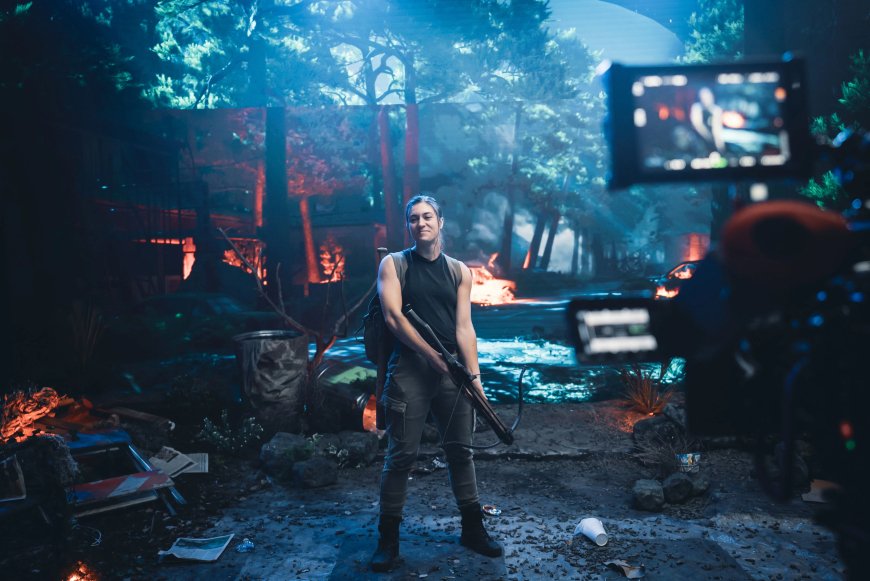Revolutionizing Filmmaking: Exploring the World of Virtual Production Studios

The filmmaking industry has undergone a seismic shift in recent years, with virtual production studios emerging as a transformative force. By blending cutting-edge technology with creative storytelling, virtual production is redefining how films, TV shows, commercials, and even live events are crafted. But what is virtual production, and why is it becoming a cornerstone of modern media production? In this guest post, we’ll dive into the mechanics, benefits, and future of virtual production studios, exploring how they’re shaping the next era of visual storytelling.
What is Virtual Production?
At its core, virtual production is an innovative filmmaking process that integrates real-time computer-generated imagery (CGI), augmented reality (AR), and physical production elements to create immersive, dynamic environments. Unlike traditional filmmaking, which often relies on green screens and extensive post-production, virtual production allows filmmakers to visualize and interact with digital environments during the shooting process. This is typically achieved through technologies like LED walls, game engines (such as Unreal Engine or Unity), motion capture, and real-time rendering.
The concept gained mainstream attention with projects like Disney’s The Mandalorian, which used a virtual production studio to create the expansive worlds of the Star Wars universe. By projecting hyper-realistic digital backgrounds onto massive LED screens, filmmakers could capture scenes in-camera, reducing the need for post-production fixes and giving actors a tangible environment to perform in.
In essence, virtual production bridges the gap between the physical and digital realms, enabling creators to craft visually stunning content with greater efficiency and creative control.
The Anatomy of a Virtual Production Studio
A virtual production studio is a high-tech filmmaking environment designed to facilitate this seamless integration of physical and digital elements. These studios are equipped with several key components:
1. LED Walls and Volume Stages
The hallmark of a virtual production studio is the LED wall, a massive, curved screen that displays real-time digital environments. Unlike green screens, which require actors to imagine their surroundings, LED walls project photorealistic backgrounds that respond dynamically to camera movements. This technology, often referred to as “the Volume,” ensures that lighting, reflections, and perspectives are accurate in-camera, creating a more immersive experience for both actors and crew.
2. Game Engines
Game engines like Unreal Engine or Unity are the backbone of virtual production. These powerful software platforms render high-quality 3D environments in real time, allowing filmmakers to manipulate virtual sets on the fly. For example, a director can adjust the lighting of a virtual sunset or shift the position of a digital mountain during a shoot, all without halting production.
3. Camera Tracking and Motion Capture
Advanced camera tracking systems synchronize the physical camera’s movements with the virtual environment displayed on the LED wall. This ensures that the digital background shifts in perspective as the camera moves, creating a parallax effect that mimics real-world depth. Motion capture technology also allows actors’ movements to be translated into digital characters or elements in real time.
4. Real-Time Rendering
Real-time rendering is what makes virtual production so revolutionary. By processing complex visual effects instantly, filmmakers can see the final look of a scene during shooting, rather than waiting months for post-production. This immediate feedback loop enhances creative decision-making and streamlines the production pipeline.
5. Collaborative Workflows
Virtual production studios foster collaboration between departments that traditionally worked in silos. Cinematographers, VFX artists, production designers, and directors can work together in real time, tweaking virtual sets, lighting, and effects on set. This interdisciplinary approach reduces miscommunication and ensures a cohesive vision.
The Benefits of Virtual Production Studios
The rise of virtual production studios has unlocked a host of advantages for filmmakers, content creators, and studios. Here are some of the key benefits:
1. Enhanced Creative Control
Virtual production empowers directors and cinematographers to make creative decisions in real time. Instead of imagining how a scene will look after months of VFX work, they can see and adjust the environment instantly. This hands-on approach allows for greater experimentation and precision in storytelling.
2. Cost and Time Efficiency
While setting up a virtual production studio requires a significant upfront investment, it can save money in the long run. By capturing final visuals in-camera, studios reduce the need for extensive post-production, which is often costly and time-consuming. Additionally, virtual production eliminates the need for expensive location shoots, as digital environments can replicate almost any setting, from alien planets to historical cities.
3. Immersive Actor Performances
Actors benefit immensely from virtual production. Instead of performing against a green screen with no context, they can interact with a tangible, dynamic environment. This leads to more authentic performances, as actors can respond to their surroundings in a natural way. For example, in The Mandalorian, actors could see and react to the desert landscapes of Tatooine projected on the LED wall, enhancing their immersion in the scene.
4. Sustainability
Virtual production is also more environmentally friendly than traditional filmmaking. By reducing the need for location shoots, it cuts down on travel-related carbon emissions. Additionally, digital sets eliminate the need for physical set construction, which often involves materials that are discarded after filming.
5. Versatility Across Industries
While virtual production is most commonly associated with filmmaking, its applications extend far beyond cinema. Advertising agencies use virtual production studios to create dynamic commercials, music videos leverage them for surreal visuals, and live events incorporate them for immersive stage designs. Even industries like architecture and automotive design are exploring virtual production for prototyping and visualization.
Challenges and Considerations
Despite its many advantages, virtual production is not without challenges. The initial cost of setting up a virtual production studio can be prohibitive for smaller studios or independent filmmakers. High-end LED walls, powerful computers, and specialized software require significant investment. Additionally, the technology demands a skilled workforce trained in game engines, VFX, and real-time rendering, which may necessitate retraining or hiring new talent.
Another consideration is the learning curve associated with virtual production workflows. Filmmakers accustomed to traditional methods may need time to adapt to the real-time, tech-heavy environment. However, as the technology becomes more accessible and training programs expand, these barriers are gradually diminishing.
The Future of Virtual Production
The future of virtual production studios is bright, with advancements in technology poised to make the process even more accessible and powerful. Here are some trends to watch:
1. Democratization of Technology
As the cost of LED walls, game engines, and rendering hardware decreases, virtual production is becoming more accessible to independent filmmakers and smaller studios. Cloud-based rendering solutions and open-source software are further lowering the barriers to entry.
2. Integration with AI and Machine Learning
Artificial intelligence is already making waves in virtual production. AI-driven tools can generate realistic digital environments, automate lighting adjustments, and even assist with script analysis. As these technologies evolve, they’ll further streamline workflows and enhance creative possibilities.
3. Expanded Use in Live Events
Virtual production is increasingly being used in live events, such as concerts and award shows, to create immersive backdrops that react to performers in real time. For example, artists like
What's Your Reaction?



























































